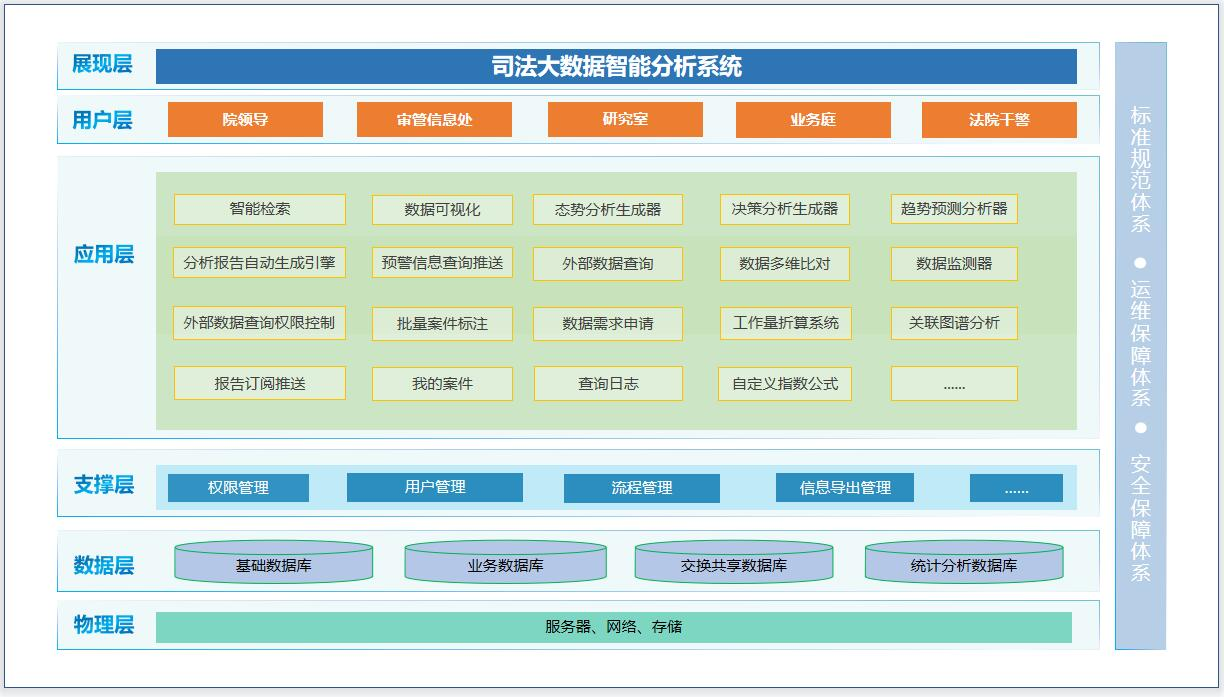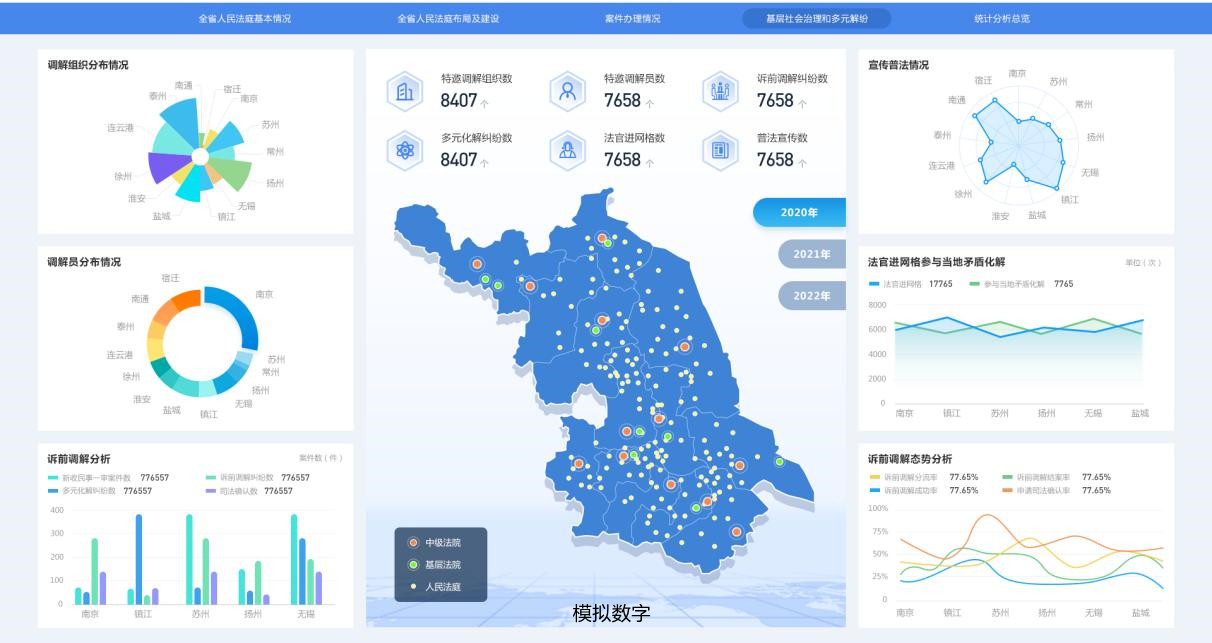
Client: A High People's Court
Industry: Court
Products/Solutions: Judicial Big Data Intelligent Analysis System
Keywords: Big Data; Intelligent Analysis; Smart Management

The Five-Year Development Plan for Informatization Construction of People's Courts (2019-2023) issued by the Supreme People's Court clearly states that it is necessary to build a big data analysis system; introduce external data, realize multi-dimensional retrieval and integrated analysis of court information resources, support timely, accurate and dynamic intelligent services, providing citizens with intelligent services such as judicial transparency, intelligent push of similar cases, and prejudgment of litigation results, decision-making support, and monitoring alerts for trial executors, as well as intelligent services for judicial research and work evaluation for judicial administrators. In order to implement the instructions of the Supreme People's Court and truly give full play to the value of judicial big data, Beiming Software has created an intelligent judicial big data analysis system, integrating big data analysis technology and court business scenarios to be equipped with scientific and systematic intelligent big data thematic analysis capabilities, forming a positive cycle of "data produces information, and information improves decision-making", and providing auxiliary decision-making references for judicial management and reform.

As a general data portal, the judicial big data intelligent analysis system supports unstructured data queries such as administrative and judgment documents. It can meet the needs of rapid queries of quality and effectiveness indicators and visualize work-level displays, and automatically generate situation analysis reports and calculate case standards. The system meets the information query needs for case handling by judges, data queries for leaders' office use, supervision and management of trial quality and efficiency, and supports multiple functions such as a large-screen display of data in cockpit mode. In addition, the system can help users discover hot spots and key issues in economic development and social governance related to court work, effectively explore the intrinsic relationship and potential value of data, assist users in producing situation analysis reports and thematic analysis reports, and provide auxiliary decision-making references for judicial management and social governance.


The judicial big data intelligent analysis system makes full use of core technologies such as big data, artificial intelligence, and cloud computing to conduct in-depth analysis of the structured and semi-structured data of the provincial court, realize diverse retrieval and integrated analysis of judicial information resources across the province, and support timely, accurate, and dynamic intelligent services. The system can not only effectively improve the quality and efficiency of court trial execution through its various functions, but also conducts in-depth analysis of the laws and correlations between judicial data and economic and social development. Through the development of big data analysis tools, the system conducts thematic analyses on economic development, social security prevention and control, citizens’ harmonious lives, public safety supervision, ecological civilization and other aspects of the province. These analyses are presented in the form of graphic analysis reports and comparative analysis tables for use by court leaders, trial management departments, research laboratories, and business courts to assist various departments in preventing and resolving major risks, promote the sound development of the local economy and society, and achieve scientific decision-making in social governance.

1. Since its launch in October 2020, the judicial big data intelligent analysis system has been used by 1,528,620 people and has achieved remarkable results in the operation of the provincial court.
2. The system provides judges with internal and external data query, document generation, automatic error correction and other services, and generates case analysis reports based on the trial element models, so that judges can visually understand the handling of similar cases and improve the quality and efficiency of trial execution.
3. The system offers functions such as automatic calculation of case standard conversions and work-level visual displays to provide references for the scientific and reasonable allocation of simple or complex cases, resolve of the contradiction of "many cases but few judges", and effectively improve the trial efficiency of cases.
4. The system integrates the key elements and nodes of the judges’ daily work into the assessment scope, forming more comprehensive and more detailed indicators for the performance assessment of judges in an all-around way.